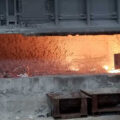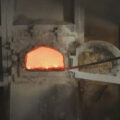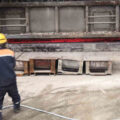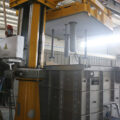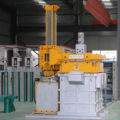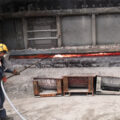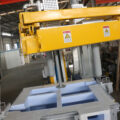Nitrogen degassing is continuously blown into the melt, and the oxidized inclusions and hydrogen are brought out of the liquid surface during the floating of the bubbles.
The nitrogen degassing can remove hydrogen, because there is no hydrogen in the inert gas blown into the melt, and its hydrogen partial pressure is zero, while the hydrogen partial pressure in the melt near the bubble is much greater than zero. Therefore, there is a hydrogen partial pressure difference between the inside and outside of the bubble. Under the effect of this partial pressure difference, the hydrogen atoms in the melt diffuse to the bubble interface and recombine into molecules at the interface to enter the bubble. This process continues until the partial pressure of hydrogen inside and outside the bubble equals, and it will stop. The hydrogen entering the bubble escapes into the atmosphere as the bubble floats up. In addition, during the floatation process of the bubbles, the micro-molecular hydrogen bubbles suspended in the melt and the gas in the inclusions can also be brought out of the liquid surface through flotation, thereby achieving the purpose of degassing.

Because the blown-in passion gas bubbles can absorb the oxidized inclusions in the melt and bring them out of the liquid surface during the floating process. This method is the so-called flotation deslagging method. Since the emotional gas bubbles adsorb the oxidized inclusions in the melt, the total surface free energy of the system can be reduced, so this adsorption can happen automatically. The smaller the surface tension between the emotional gas and the inclusions, and the greater the surface tension between the melt and the emotional gas, and the greater the interfacial tension between the melt and the inclusions, the greater the slag removal, the stronger the ability. When using nitrogen degassing, the covering flux should be evenly removed from the liquid surface. This is because after the bubble brings the inclusions out of the liquid surface, if there is a layer of flux on the liquid surface at this time, the inclusions will enter the flux and become slag, which is easy to pull out. Otherwise, the denser inclusions will fall into the molten aluminum again, while the less dense inclusions will form scum on the liquid surface, which is difficult to separate from the molten aluminum. Pulling out these scum will bring out a lot of molten metal and increase Large metal loss.

